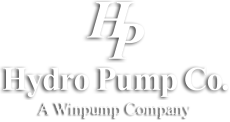
Varying water usage in different types of buildings require systems that are flexible to meet the individual needs of each building. Pressure boosting systems help maintain a constant set pressure in the delivery pipeline to produce sufficient water flow and pressure to customers when they need it. A pressure boosting system consists of one or more pumps that are installed into a booster set to increase the pressure in a system to a certain point independent of flow and inlet pressure.
Several scenarios may necessitate the use of a pressure boosting system. If your water is supplied by a municipality, you may experience drops in water pressure as more homes or buildings are added to the main. Undersized piping within your home or building could lead to water pressure drops when you are using water in more than one part of the building at the same time. If you are located a significant distance from the main supply, it can negatively affect your water pressure. Being on a well can also cause low pressure. Just being located on an upper level in a building can cause your water pressure to drop due to the effects of gravity.
Pressure boosting systems can be installed in a variety of system configurations. Each configuration offers different advantages and features, including comfort level, initial investment cost, operating costs, flexibility, and supply assurance. Which one is best for you will depend on your specific circumstances.
- A direct boosting systems is a booster set that is connected directly to the water main that serves the whole building or only the upper parts of it.
- Zone divided systems consist of several boosters that are connected to the water mains or a common break tank serve their own pressure zone
- In a roof top tank system, a booster fills up a roof tank. The water then uses gravity to flow to the consumer. This system often has a separate booster set serving the upper floors where the pressure is too low due to insufficient geometric height.
- In a series connected system with immediate break tanks, every booster serves its own pressure zone in a building, drawing from its own break tank which is located on a separate floor.
- In a series connected system without immediate break tanks, the boosters are connected directly in series.
Pressure booster sets can be delivered with our without frequency controlled pumps. The advantage of pressure booster sets without frequency control is that the initial installment cost is often lower than that of frequency controlled boosters. However, they have the disadvantage of not being able to adjust
the flow to fit demands. Also, the pressure is not as steady with as a system that uses frequency controlled boosters.
Pressure booster sets with frequency controlled pumps deliver the exact amount of water needed, ensuring that only the needed energy is consumed. The advantage of these systems is that the set point can be altered according to the flow, ensuring that the energy loss due to resistance in pipes is reduced. While the initial investment is higher than a booster system without frequency control, the low operating cost, high comfort level, and the flexibility of the system make it worth the investment.
